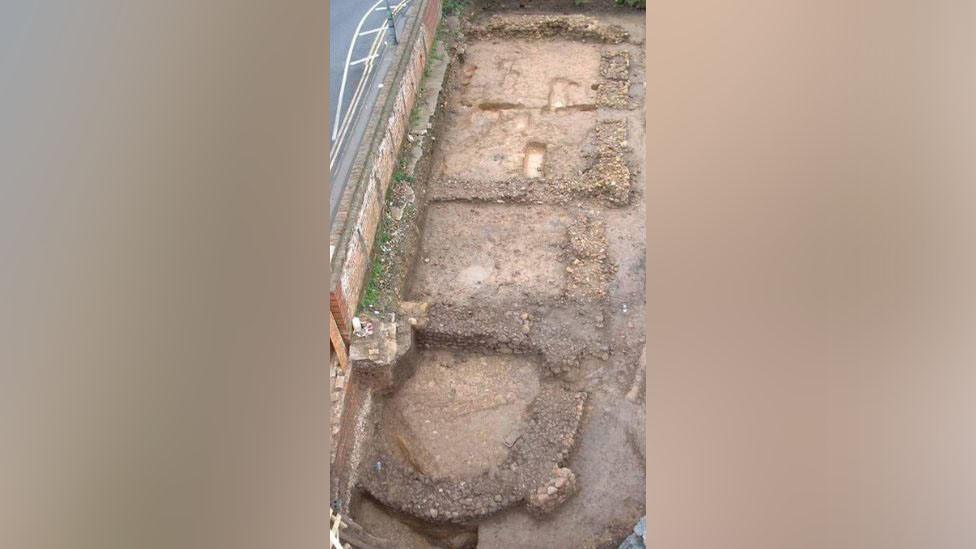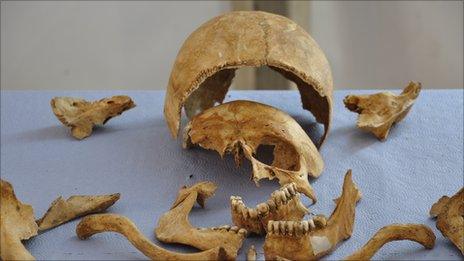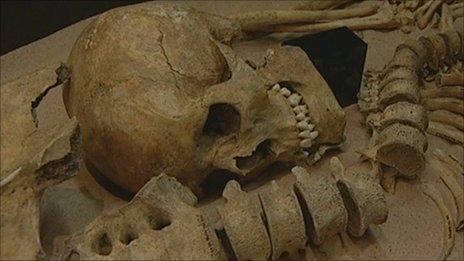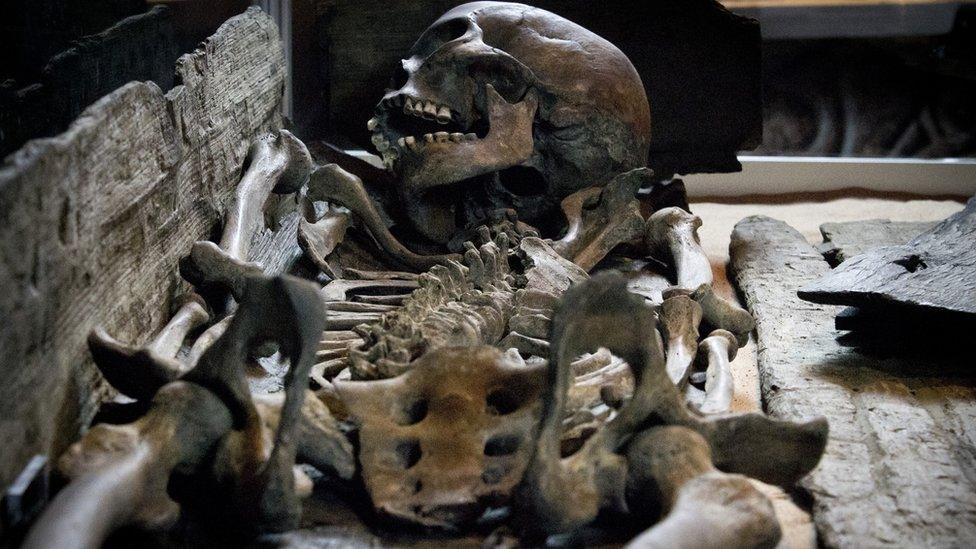York skeleton reveals lifestyle of medieval anchoress
- Published

The apse at the site of All Saints Church where the skeleton of Lady Isabel German was found
A skeleton found during excavations at a site in York in 2007 is believed to be a medieval religious hermit.
Researchers at the University of Sheffield have identified the remains as possibly being those of Lady Isabel German, who died in the 15th Century.
Hers was one of 667 complete skeletons discovered in a dig at the site of a former church at the York Barbican.
Archaeologist Dr Lauren McIntyre said Lady German would have been "a highly significant figure" in the community.
She was an anchoress, a woman who was walled into a cell to live a life of prayer and contemplation, who lived at All Saints Church in Fishergate in York, the researchers said.
The skeleton was found in the apse of the church foundations, a small room located behind the altar, where only clergy or wealthy people were buried.
Dr McIntyre said the woman had septic arthritis and advanced venereal syphilis, which would have left her disfigured.
"Lady German lived in a period of history where we typically think of there being a strong association between visible and disfiguring illnesses and sin, with that type of suffering seen as a punishment from God," Dr McIntyre said.
"Such severe disease could also have been viewed positively, being sent by God to grant martyr-like status to someone special."
But she said Lady German may also have chosen "to devote herself to a life of solitude as a way to remain autonomous and in control of her own destiny".
The skeletons excavated at York Barbican dated to the Roman, Medieval, and Civil War eras.
Lady German's story will feature in an episode of Digging for Britain to be broadcast on 12 February at 20:00 GMT on BBC Two.

Follow BBC Yorkshire on Facebook, external, Twitter, external and Instagram, external. Send your story ideas to yorkslincs.news@bbc.co.uk, external.
Related topics
- Published5 July 2011

- Published28 July 2011

- Published2 December 2015
